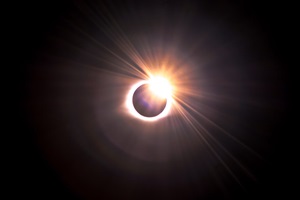Sioux Center, Iowa — It’s been only seven years since an eclipse darkened parts of the Midwest, and although Monday’s eclipse will not be total in Iowa, it will be significant for most of the state.
Professor of Chemistry and Planetary Sciences at Dordt University, Dr. Channon Visscher says you will notice it.
The eclipse will begin about 12:40pm, but Visscher says you won’t notice it until about 1pm. The maximum coverage will occur at 2pm, and the event will end about 3pm. If the weather is clear, you will be able to view the partial eclipse, but Visscher says you’ll need eye protection.
The most spectacular part of an eclipse is the diamond ring effect when the moon completely covers the sun and just slightly moves off. Unfortunately, you must be in the area of totality to see the ring effect and the nearest point is the southern Illinois and Southeast Missouri area.

However, Visscher says a partial eclipse has its own unusual things to look for.
Visscher says if you have a chance, get out and see it.
So what does a Planetary Scientist do when he’s not in the path of a total eclipse?
If you plan to make the drive to be in the path of totality, Visscher says you want to be in the middle of the swath of totality for the longest view, about a 50- to 100-mile-wide area.
Whether you travel to see the total eclipse, or stay put for the partial, remember to wear your solar eclipse glasses, which you can find at most retail outlets right now.












